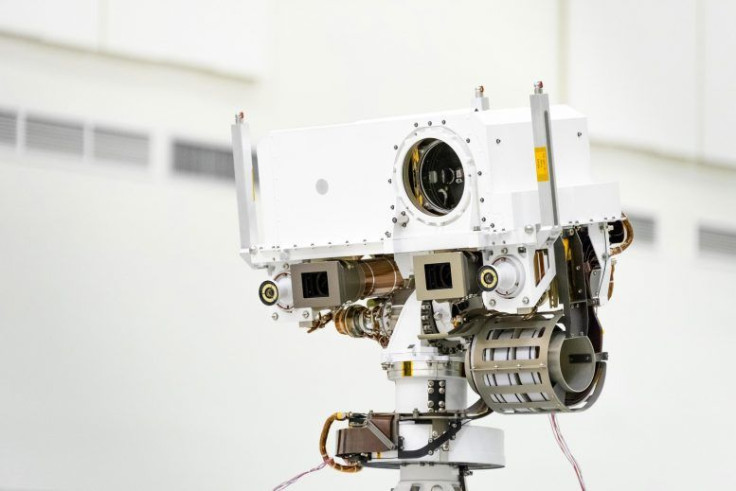Why Is NASA's Mars 2020 Rover Equipped With A Rock-Vaporizing Laser?

KEY POINTS
- NASA's Mars 2020 rover is equipped with a powerful instrument known as SuperCam
- SuperCam is an upgraded version of the Curiosity rover's ChemCam
- NASA will use SuperCam to detect signs of alien microbial life on Mars
In preparation for its upcoming mission to Mars, NASA equipped its new robotic rover with a powerful laser. The new instrument will enable the rover to hunt down signs of alien life on the Red Planet.
NASA’s Mars rover mission is scheduled to launch in July this year. It is expected to reach Mars in February 2021. The rover’s latest equipment, known as SuperCam, is regarded as an upgraded version of the Curiosity rover’s ChemCam. This instrument helps the rover determine the mineral and chemical composition of rock samples.
According to NASA, SuperCam is attached to the mast of the rover. It is essentially a powerful camera equipped with a laser that’s capable of vaporizing rocks. It works by using the laser to target rocks and other minerals that are too far for the rover to reach.
Once it has selected a target, the SuperCam will use its infrared laser beam to heat it up to around 18,000 degrees Fahrenheit, which is enough to vaporize it. The instrument will then scan the plasma from the vaporized material to analyze its chemical composition.
Another feature of the Mars 2020 rover’s new equipment is its green laser, which can detect the molecular composition of surface chemicals. This type of laser can also cause carbon-based chemicals in samples to emit light. This feature can be used by the rover to track down materials that contain microbial life.
Aside from these features, the SuperCam is also equipped with a microphone that will allow scientists to listen to the sounds produced by the rocks as they get hit by the laser. Since material properties produce different sounds when they get hit by the laser, scientists will be able to collect information regarding the composition of the targets.
“The microphone serves a practical purpose by telling us something about our rock targets from a distance,” Sylvestre Maurice of the Institute for Research in Astrophysics and Planetary Science in France said in a statement. “But we can also use it to directly record the sound of the Martian landscape or the rover’s mast swiveling.”
© Copyright IBTimes 2024. All rights reserved.





















